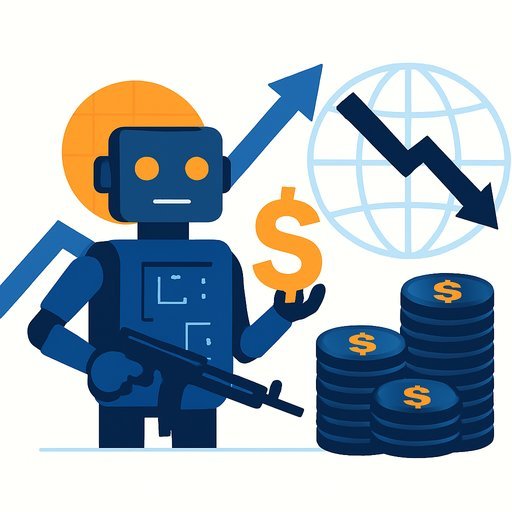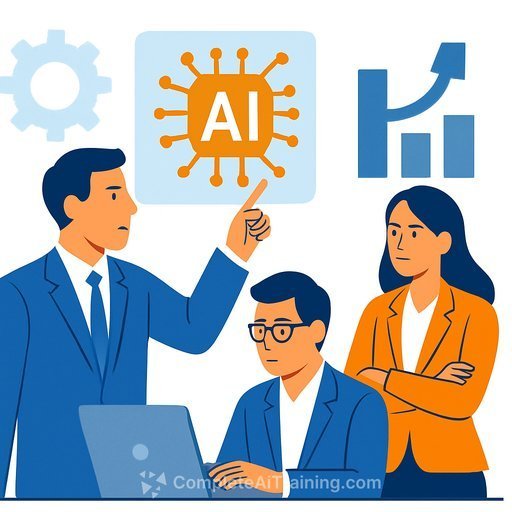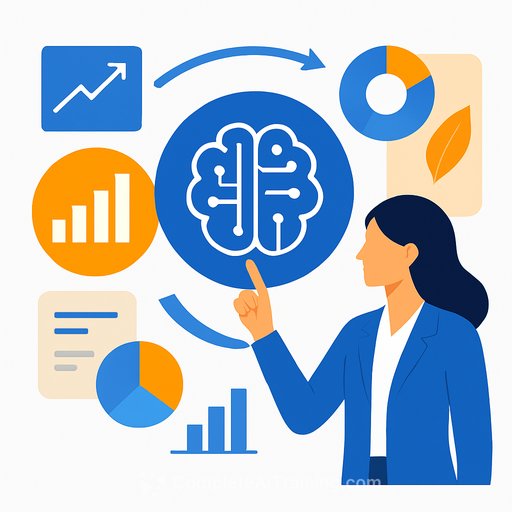AI Leadership Can Accelerate Decarbonisation: A Practical Playbook for Executives
Energy demand is set to rise sharply by 2050, with the International Energy Agency projecting a significant uplift. In that context, AI isn't just another initiative-it's how you accelerate decarbonisation while improving margins and execution.
Accenture's latest report, Powered for Change, makes a clear point: companies that integrate AI and automation across operations can compound learning, reduce costs over successive projects, and hit emissions targets faster. This isn't theory-it's operating model design.
International Energy Agency | Accenture: Powered for Change
Think in generations, not quarters
Most decarbonisation plans over-index on quick wins. Accenture notes that as much as 75% of current plans focus on short-term projects, which raises long-run cost and risk. The fix: a multigenerational approach that reuses and improves the same design over time.
- Build once, iterate often: create a core platform for products, assets, or technologies that can be upgraded each project cycle.
- Standardise designs and components to shrink engineering time, permitting friction, and vendor complexity.
- Shift capex across iterations: move from bespoke builds to repeatable modules that get cheaper and faster with scale.
- Embed learnings from each project into the next-data, templates, contracts, and playbooks.
Result: lower unit costs, faster delivery, and more budget available for low-carbon solutions.
Build a digital backbone that learns
Many industrial decarbonisation efforts stall because data is fragmented and systems don't learn from project to project. AI changes the economics when it can see across assets, timelines, and suppliers.
- Unify data across engineering, procurement, construction, operations, and finance-one model, governed access.
- Automate the handoffs: design-to-procurement, procurement-to-construction, construction-to-operations.
- Stand up MLOps for continuous model updates and auditability (critical for ESG and compliance).
- Use digital ecosystems to coordinate partners, share standards, and reduce rework.
As Stephanie Jamison, Global Sustainability Services Lead at Accenture, notes: bold reinvention changes the economics of decarbonisation-AI and gen AI amplify gains by capturing learnings across projects and compounding returns.
Put AI agents to work where delays and waste live
- Scheduling and resource planning: dynamic reprioritisation of tasks, crews, and equipment based on real-time constraints.
- Risk forecasting: probabilistic cost and timeline risk based on historical variance and external signals (weather, logistics, policy).
- Permitting and compliance: automate document checks, version control, and evidence trails for regulators.
- Quality and maintenance: computer vision for QA, predictive maintenance for critical assets to cut downtime and emissions.
The goal is simple: fewer delays, tighter cost control, higher project success rates.
Ecosystem-wide decarbonisation starts with procurement
Short-term sourcing creates volatility. Accenture recommends building resilient supply chains and long-term partnerships to stabilise cost and delivery.
- Lock in multi-year agreements for critical components to smooth pricing and availability.
- Co-invest with suppliers in capacity and innovation tied to your standardised designs.
- Develop local manufacturing hubs to improve predictability and reduce geopolitical risk.
- Target a 30-50% cost reduction over successive projects as designs and supply mature.
12-month leadership agenda
- Set a multigenerational roadmap: 3-4 iterations with clear cost, emissions, and schedule targets per wave.
- Create a single data model for projects and operations; fund the integration work, not just the dashboards.
- Launch 2-3 AI agents in high-friction areas (schedule, permitting, procurement) with measurable KPIs.
- Standardise 60-80% of designs and components; build a reusable template library.
- Reshape procurement for resilience: long-term contracts, dual sourcing, and local options where viable.
- Tie executive incentives to iteration cost-out, emissions intensity, and on-time delivery.
Metrics that matter
- Cost per MW/ton/unit (by iteration)
- Schedule adherence and variance
- Scope 1-3 emissions intensity per asset and per project
- Change orders per project and root-cause trends
- Supplier on-time, in-full (OTIF) and price stability
- Model reuse rate and learning adoption across projects
Common failure modes to avoid
- One-off pilots with no path to standardisation and reuse
- Data lakes with no governance or integration into workflows
- Short-term sourcing that breaks project schedules and margins
- AI projects without clear ownership, KPIs, or model lifecycle management
Upskill your operating core
Execution depends on people and process as much as platforms. Equip program leaders, ops, and procurement teams to deploy AI and automation where it drives measurable impact. For a fast overview of role-based options, see a curated list of training by job function: AI courses by job.
The takeaway
Decarbonisation scales when you think in generations, not projects. Standardise, digitise, and let AI compress timelines, cost, and emissions-then reinvest the gains in the next iteration. That's how leaders move faster, spend smarter, and build a more reliable, sustainable operation.
Your membership also unlocks:






